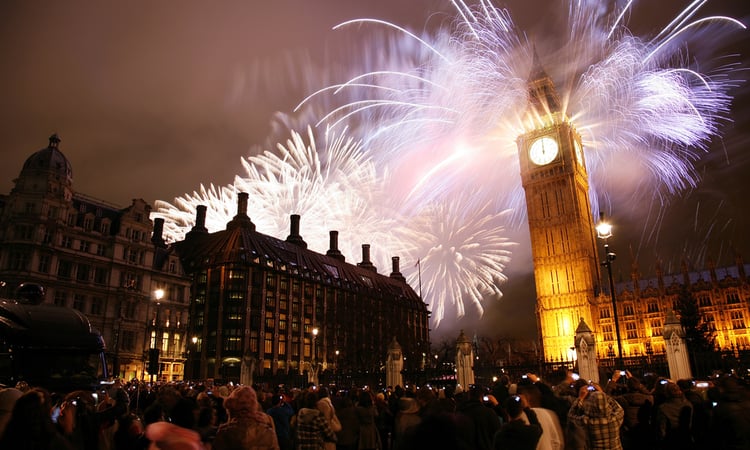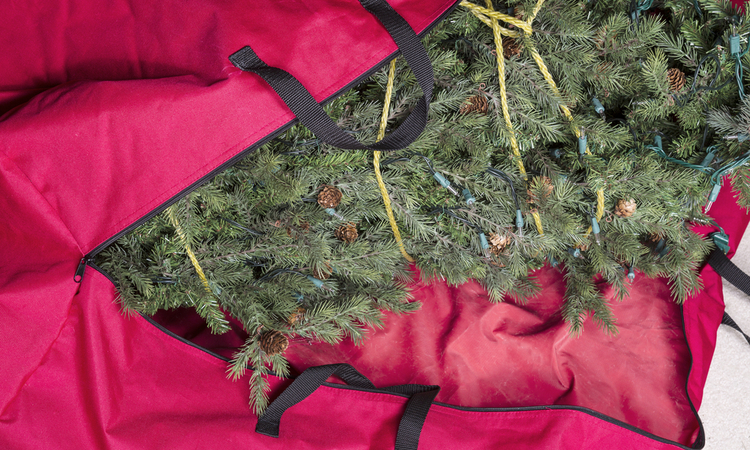Tuesday, December 28
Artificial Intelligence Trends 2020 to 2030
Dublin, June 04, 2020 (GLOBE NEWSWIRE)
This report provides the strategists, marketers and senior management with the critical information they need to assess the global artificial intelligence market.
This report focuses on the artificial intelligence market which is experiencing strong growth. the report gives a guide to the artificial intelligence market which will be shaping and changing our lives over the next ten years and beyond, including the markets response to the challenge of the global pandemic.
The global artificial intelligence market is expected to grow from $28.42 billion in 2019 to $40.74 billion in 2020 at a compound annual growth rate (CAGR) of 43.39%. The growth is mainly due to the COVID-19 health emergency across the globe that has led to a new wave of transformative technologies including the revolutionary artificial intelligence technology (for example - smart machines and robots) emerging as a possible solution to contain the epidemic. The market is then expected to recover and reach $99.94 billion in 2023 at CAGR of 34.86%.
Reasons to Purchase
- Gain a truly global perspective with the most comprehensive report available on this market covering 12+ geographies.
- Understand how the market is being affected by the coronavirus and how it is likely to emerge and grow as the impact of the virus abates.
- Create regional and country strategies on the basis of local data and analysis.
- Identify growth segments for investment.
- Outperform competitors using forecast data and the drivers and trends shaping the market.
- Understand customers based on the latest market research findings.
- Benchmark performance against key competitors.
- Utilize the relationships between key data sets for superior strategizing.
- Suitable for supporting your internal and external presentations with reliable high quality data and analysis
- the market characteristics section of the report defines and explains the market.
- the market size section gives the market size ($b) covering both the historic growth of the market, the influence of the COVID-19 virus and forecasting its growth.
- Market segmentations break down market into sub markets.
- the regional and country breakdowns section gives an analysis of the market in each geography and the size of the market by geography and compares their historic and forecast growth. it covers the growth trajectory of COVID-19 for all regions, key developed countries and major emerging markets.
- Competitive landscape gives a description of the competitive nature of the market, market shares, and a description of the leading companies. Key financial deals which have shaped the market in recent years are identified.
- the trends and strategies section analyses the shape of the market as it emerges from the crisis and suggests how companies can grow as the market recovers.
- the artificial intelligence market section of the report gives context. it compares the artificial intelligence market with other segments of the artificial intelligence market by size and growth, historic and forecast. it analyses GDP proportion, expenditure per capita, artificial intelligence indicators comparison.
Macro Trends 2020-2030
We outline 12 macrotrends set to shape the 2020s. These represent major shifts in the demographic, environmental, economic, technological, political and cultural landscapes that can be foreseen with a relatively high degree of certainty, though their implications are often more uncertain or ambiguous. We then focus in on a subset of the macrotrends to explore this ambiguity and suggest how the global business community might seek to influence the way these trends play out in order to accelerate progress on Vision 2050. Crucially, too, all the macrotrends are interconnected: how they interact with one another is central to how the next decade will play out. We explore some of these interconnections briefly in the introduction to each landscape.
Macrotrends emerging over the next decade:
Potential “wild card” Disruptions
- FINANCIAL CRISIS How much will COVID19 cost, and how will we pay when the next crisis comes?
- GLOBAL PANDEMIC No country is fully prepared to handle a pandemic, and neither are any economies.
- MAJOR CONFLICT Cyber attacks, e.g. on critical infrastructure will touch all ordinary citizens in a conflict.
- AN ECONOMIC “SINGULARITY” What happens when new jobs can’t be created where jobs have been destroyed?
- POPULAR REVOLTS & REGIME CHANGE Inequality will continue to rise making more frequent and severe protest likely.
- A CLIMATE “MINSKY MOMENT” Costs, disclosures, social pressures all reorient financial flows – but how fast?
- ENERGY TRANSITION TIPPING POINT Market forces lead to fossil fuel demand peaking and the energy transition accelerates.
- BIOTECH BOOM Disruption comes to food, health and materials as biotech’s potential emerges.
- GLOBAL GREEN (NEW) DEAL Citizens embrace the chance to improve jobs, communities and environments.
- SOCIETAL “TECHLASH” Society sours on the costs of free tech, treasuries tire of lost taxes and competition.
Next Decade Predictions
At the beginning of every year, trend forecasters the world over put together expensive reports predicting what the future will bring. As a trend forecaster myself, I’ve read literally hundreds of predictions in the past few weeks made by the likes of McKinsey, WGSN and countless others so that you don’t have to. So, what do these professional speculators of the future think the next few years hold?
Many of the themes are predictable: automation, artificial intelligence, climate crisis and climate-related migration, virtual reality and augmented reality, China’s rising power, cryptocurrencies, Zoom, remote work and people agitating for their rights.
Like all predictions, these should be taken with a grain (or boulder) of salt. For example, the firm Mintel “predicts” that by 2030 “corporations will shape transnational politics”, something they have clearly already been doing for decades, or that by 2025 “more subtle gender labels will emerge”, something that’s also already here. Barclay’s 150 trends for investors to watch in the 2020s report, meanwhile, puts smartdust (microscopic sensor systems) in the same “unlikely to happen” quadrant as cryptocurrencies, which are booming. Needless to say, operating in the realm of the speculative and pandering to potential clients is an unsteady combination, though not without its jewels.
Still, here is a sampling of the big and compelling trends that forecasters seem convinced will come to pass, if not in 2021 then over the next five to 10 years:
Remote work due to Covid-19 has exposed the inadequacies of compulsory office attendance; now that people are working from home, it will never go back to the way it used to be; geographical requirements around talent acquisitions will loosen or expand beyond urban centers.
Besides being notoriously difficult for concentration and privacy, an airborne pandemic has lessened the appeal of cramming big groups of people shoulder to shoulder in a single room.
Microsoft is reportedly introducing a “virtual commute” feature intended “to create mental bookends for the remote workday”. It is also partnering with the meditation app Headspace to add a new “emotional check-in feature”.
Like nutrition facts on food, listing carbon expenditures related to various products on their packaging or in marketing materials will become a norm. This could be used to justify higher prices for certain more “carbon-responsible” items. READ MORE...
Monday, December 27
Power Grid Fails
#1 Lighting
Make sure you can see when the power grid fails! Could you find your way out in pitch black with elevators not working at home or work or when traveling? The power will probably fail when you don’t expect it.
Even a small flashlight can make a huge difference. Consider a flashlight for each bedroom, each bathroom and in your kitchen, garage, in each vehicle and one near your electrical panel.
Stocking spare flashlights is a great plan, especially if you have kids who lose them. Consider a flashlight for your key ring, your pocket and/or purse and one at work. Also, consider rechargeable batteries for those flashlights.
Candles or oil hurricane lamps are other possible lighting source, but keep in mind they create a fire risk and fresh air may be a problem if you are in a tightly sealed building. One advantage of candles and lamps is that they do provide heat, which is useful for cold climates.
A crank powered flashlight is great for kids and serve a double function as a flashlight and backup charger for emergencies. Plus you can get them relatively inexpensively.
Best inexpensive flashlight – We recommend a 5 pack of AA Kootek XPE-Q5 LED flashlight with adjustable focus zoom for more info on this flashlight see the “Best Cheap Flashlight” post.
Best mid-priced 1000+ lumen flashlight – 18650 LED Flashlight Thrunite TN12
Multi-function crank flashlight/radio/USB phone charger
Kaito Voyager Flashlight with AM/FM NOAA /2 band shortwave Radio, Cell Phone Solar / Crank USB Charger
iRonsnow Dynamo Emergency Solar or Hand Crank FM Radio with LED Flashlight with USB charger
Good small work flood light (has a magnet so it can stick to car while changing a tire) the NEBO COB flashlight is a great option, it uses 3x AAA batteries.
Solar Camp Light – Camping Lantern (with USB charger)
Crank Camp Light – Camping Lantern (with USB charger)
#2 Batteries
Flashlights are great, but when is the last time you checked them? Get batteries – a lot of rechargeable batteries.
Do you have long life batteries? You can get low self discharge rechargeable AA batteries. Also there are batteries with a long storage life. The Duracell pack has a 10 year shelf life and a new Energizer pack has a 20 year shelf life.
If possible, standardize your flashlights and other battery gear on AA, AAA and/or 18650. Even though there are long shelf life batteries, we recommend rechargeable batteries and a good charger.
Rechargeable batteries cost a bit more up front but can save you a lot of money over the years. They batteries protect you in an extended power outage because you can recharge them. You would eventually run out of single use batteries.
There are crank and solar battery chargers, also your car can charge batteries while you travel using a 12 volt adapter.
Our favorite Panasonic AA and AAA Eneloop Pro
Tenergy AA and AAA batteries are good and less expensive than the Panasonic
Nekteck 21watt Solar Panel charger for USB devices
XTAR VC4L USB battery charger
#3 Water
Keep a couple cases of water bottles around for emergency power outages. Rotate your water storage. Even water will go stale after extended storage. We have a 55 gal drinking potable water drum with a pump and consider a roller base for emergencies, especially if you do not have an alternate water source. READ MORE...
Electric Vehicles
The city’s transit agency has budgeted $650 million over 20 years for electric buses and a charging facility for 187 such vehicles. But officials are still trying to solve the dilemma of power interruptions like the Texas freeze.
“Redundancy and resiliency when it comes to power is something we have long understood will be an issue,” said Capitol Metro spokeswoman Jenna Maxfield.
Austin’s predicament highlights the challenges facing governments, utilities and auto manufacturers as they respond to climate change. More electric cars will require both charging infrastructure and much greater electric-grid capacity. Utilities and power generators will have to invest billions of dollars creating that additional capacity while also facing the challenge of replacing fossil fuels with renewable energy sources.
Extreme weather events add additional layers of difficulty.
“Reliability keeps you awake,” California Energy Commission member Siva Gunda said in an interview.
Rolling blackouts during a California heat wave last year prompted the state to direct its utilities to procure emergency generating capacity for this summer and to reform its planning for reserve power.
The state plans an aggressive phase-out of sales of gas- and diesel-powered cars and trucks by 2035 - which, if achieved, would require vast increases in electric grid capacity. READ MORE...
Power Grid
There, at an installation opened earlier this year by a car-sharing company called Revel, on the site of the old Pfizer pharmaceutical headquarters, this carbon-free power can help juice up a whole fleet of sleek vehicles that aim to leave the internal combustion engine behind.
But that’s on a good day. Even now — before this state and the country’s grand ambitions for an electric future are fully in motion — there are too many bad ones.
Seventy-four times last year, the wind across Upstate New York dropped so low that for stretches of eight hours or more barely any electricity was produced. Nearly half the year, the main transmission line feeding the metropolitan area was at full capacity, so that no more power could be fed into it. Congestion struck other, smaller lines, too, and when that happened some of the wind turbine blades upstate fell still.
And in New York City this summer, the utility Con Edison appealed to customers to cut back on their electricity usage during the strain of five separate heat waves, while Tropical Storms Elsa, Henri and Ida cut power to thousands.
Converting the nation’s fleet of automobiles and trucks to electric power is a critical piece of the battle against climate change. The Biden administration wants to see them account for half of all sales by 2030, and New York state has enacted a ban on the sale of internal combustion cars and trucks starting in 2035. READ MORE...
Sunday, December 26
The Day After
There is always a day after... and, as one gets older, these days after happen quicker and quicker... with each day having the same number of minutes and hours as the day before... yet, 24 hours does not seem to last long at all.
So, here we are, the day after Christmas Day 2021 and soon it will be 2022 and we will start all over again... wondering what we have done and what we have learned from the previous 12 months. And, I don't mean this from the standpoint that we should have learned anything at all... especially since knowledge is absolute but relative.
One thing that I have learned which is probably my most important lesson of all, is the fact that I am no longer a LIBERAL... with my radical liberal views, mentalities, and attitudes... and, part of that change, that transformation, is a result of my retirement and no longer having to kiss the asses of my incompetent, Peter Principle bosses.
The elite of society are always the same, greedy for more and more money, always right with their opinions which means everyone else is wrong even though mathematically that is an impossibility from a probability point-of-view, living a life of arrogance in that they always feel superior to those who do not have what they have, and that life would be so much better if they were the only ones who were living.
These people will always be around, but what these people do not understand is that they must shit just like everyone else, even though they might wipe their asses differently, and when they are dead, they are dead just like everyone else with no special privileges, just another dead corpse either buried in the ground or cremated.
Fortunately, each of our tomorrows will be another day after and we will be able to analyze our day before and see how we did, whether or not we were true to our values and integrity or if, we allowed ourselves to be influenced inappropriately... and if that were to be the case, it would certainly not be the first time that we have compromise or will feel that we need to compromise again.
We are on a never-ending journey forward and each day is a opportunity to approach our goals and reach our destinies in the sense of always making improvements to the way we live our lives, never being satisfied with how we were yesterday because we are always gettig better... and will never reach the end of that quest...
Keeping Christmas Decorations Up
But when should it end? When is the right time to take down your artificial Christmas tree?
This can be a question of faith, personal choice or, alternatively, whether you’re a fan of Christmas. At Christmas Tree World, we try to make the festive period as enjoyable as possible, so here is a guide for how long we advise keeping your Christmas tree decorations up.
Just remember, taking your tree down requires as much time as putting it up. You need to consider your tree’s tinsel, Christmas baubles, Christmas tree skirt, Christmas tree lights or even nutcracker soldiers.
Read on to find out just how long you should keep decorations up for at Christmas…
The Twelfth Night
This combines tradition and faith in a tradition stretching back to the Victorian era - taking your decorations down on the twelfth night of Christmas.

The Twelfth Night tradition can vary, depending on which day you celebrate. It can start on either Christmas Eve or Christmas Day. So, you could celebrate this tradition up to January 6th, the twelfth night of the 12 days.
For many in the west, Christmas Day is the “First day of Christmas”, so, the 12 days run to January 5th, which is Epiphany Eve - when the three wise men visited Jesus Christ. This tradition can cause confusion, depending on which faith you follow or your starting date, as some regard January 6th as Twelfth Night because it is the 12th day after Christmas.
Candlemas
This is the tradition mainly belonging to the Catholic and some Christian faiths, which sees trees remaining up until the start of February.

Believe it or not, this was the tradition until the 19th century, keeping Christmas decorations up until February 2nd where Candlemas marked the end of the holiday. It is from the new testament chapter which commemorates the presentation of Jesus at the temple in Jerusalem to induct him into Judaism.
Of course, if you have a real tree, this date is not ideal - your tree is highly unlikely to last. With an artificial Christmas tree, you won’t have any worries of your tree lasting to this date. For those who would love to see Christmas Day every day, Candlemas could be the perfect excuse to keep the tree up for a whole extra month!
New Year’s Day
New Year’s Day can mean it’s time for a resolution, a new job, a “new me”, big plans, recovering from an NYE party - or just another day.

Tied up in this is an ideal day to take down the Christmas decorations. For many, the Christmas period lasts for the month of December, and so it finishes at the end of the year. If you’re all about the build-up to Christmas, everything afterwards can feel rather flat, so, the start of January may be the perfect time to pack away the tree and decorations.
By taking down your tree and decorations on New Year’s Day, you are signalling an end to the Christmas period and to the previous year. You’re ready for the new year, which brings an easy finality to the festive season.
How should I store my Christmas tree?
Of course, when the Christmas season ends, you need to store your artificial tree away until next December.
Having invested in an artificial Christmas tree, which will last for years to come, you need to pack it away securely. Christmas tree storage bags by Christmas Tree World provide the perfect solution.

Our Christmas tree storage bags can store trees up to 9ft tall. If your tree is larger than this, we would recommend using two bags, however, you can break a Christmas Tree World tree down into parts. The bags are made from strong material and with durable handles, so there’s no struggling with boxes in the loft.
Also available for fibre optic Christmas trees, these bags ensure that when Christmas rolls around again, you can unpack your tree knowing it’s clean, dry and undamaged.
We all wish Christmas could last forever, but the tree has to, reluctantly, come down at some point and we hope this has given you some helpful ideas.
For more handy tips for next year's festive season, read the Christmas Tree World blog. Use our Christmas tree decoration calculator to find out how many decorations and lights you need for your tree.
Categories: Christmas Decorations
Tags: Christmas Tree World, Christmas, Christmas Decorations, Christmas 2019, christmas tree & Christmas traditions
Posted On: 26th December 2019
Posted By: Lawrence Evans
Holiday Blues
There are many reasons people get sad after the holidays. Here are some of them.
We tend to have our schedules filled with social events during the month of December, only to have virtually nothing on the calendar in the month of January. So, we go from being social butterflies to being homebodies. If you enjoyed and looked forward to socializing, it most likely felt good and fulfilling to you. Getting out and being with people may have helped you to feel wanted, loved, important. You may have had the opportunity to meet new people, make new friends and/or reacquaint yourself with old ones. A change in your social calendar with a sudden lack of social events to go to can lead to loneliness, boredom and a feeling of isolation.
We often spend time with family during the holidays. And spending time with family can leave us with mixed feelings. Sometimes we feel let down by our interactions with family members and disappointed with the way they behaved towards us and/or treated us. This can lead to sadness and its own kind of mourning. Other times, we might experience tremendous joy at being with family members and then miss them terribly when they have gone home.
Holidays tend to bring up memories of those no longer with us, or those with whom we no longer have a relationship. The loss might be because of death, divorce, or distance. Holidays can make us feel like we're going through the mourning process all over again.
January is a dark, cold month where people tend to hibernate. So you may feel stuck at home. Additionally, it’s a month that can bring lots of snow leading to cancellations and the inability to go out as often as you may want.
If you traveled or moved around a lot during the holidays, you may be tired now that they are over. Fatigue can cause us to feel run down and bring on sadness.
You may have taken days off from work with time to rest and relax and now are back to work every day. Taking time off means that work was not done and you may be left with a pile of work to get through that can seem overwhelming.
You may have overindulged in food and/or drink during the holidays and now when you get on the scale you feel guilty, inadequate, and/or weak.
Perhaps you’re disappointed by the holidays. It wasn’t what you had hoped for and now feel let down that they’re over.
Above are some of the reasons why the end of the holiday season may cause sadness, even depression in some. Below are some things you can do to help yourself. READ MORE...







































